How cheesecake became our most-loved dessert – and the secret recipe for success
Once the dessert of the ancient Greeks, cheesecake has now conquered British hearts and taste buds. From its global variations to its rise as the nation’s favourite treat, Clare Finney discovers why this creamy classic is leaving traditional bakes in the dust and shares a recipe for how to perfect it at home
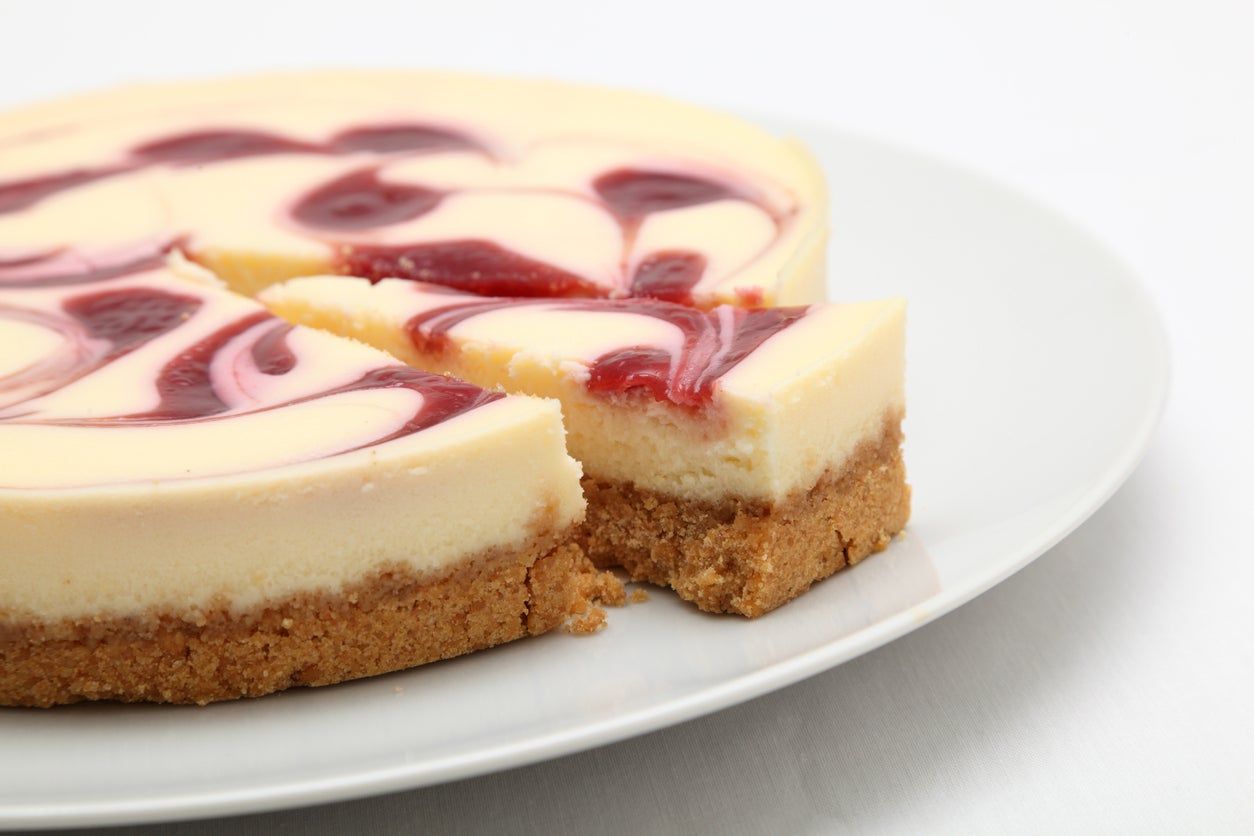
“I am not a dessert person,” I will protest when I’m being coerced into ordering something sweet. And it’s true: I’d rather close with anchovies than I would apple tart or treacle sponge. Yet as with every rule, there’s an exception: I am not a dessert person, but I love cheesecake.
According to research by Spar, I’m not alone in my love for this creamy combination of cheese, sugar and usually (but not necessarily) biscuit. Last week, they announced that a poll of 2,000 adults revealed cheesecake to be Britain’s most popular teatime treat, followed by chocolate cake, carrot cake, lemon drizzle then Victoria sponge.
“The popularity of traditional cakes is no surprise, as we are a nation that loves our classic bakes,” says Ian Taylor, Spar’s retail and brand development director, who commissioned the survey. Yet with cheesecake coming out top, “it’s obvious that people are also looking for bakes that give us flavours with inspiration from around the world”.
It’s true there are few puddings as international as cheesecake, with iterations from Italy to the Philippines, Spain to New York. Its origins lie with the ancient Greeks, who served “a flat wheaten disc with honey and cheese”.
“The Romans adapted it to serve the cheese filling in pastry,” says food historian Dr Eleanor Barnett. From there, they spread around the world, as good dishes are wont to do – particularly when they can be adapted to suit local ingredients, customs and tastes.
Though a classic sponge cake might strike one as more traditionally English, it is in fact here that cheesecake in its modern form emerged, with cheese curds, sugar, eggs and flavourings. “There’s an early recipe from 1390 that some think is the first ‘modern cheesecake’,” Barnett points out. By the mid-17th century, breadcrumbs were being added; then, over in 19th-century America, we got cream cheese, and the beloved biscuit base, which seems crucial to its latter-day popularity.
None of this really explains the cheesecake’s most recent power-grab, with sales at Waitrose up 20 per cent in the last fortnight and cheesecake searches on their website up 100 per cent in the past three months.
Of course, it’s down to social media. You can see why TikTok has taken to it. Its appeal is visceral and visual. If it’s Japanese cotton cheesecake, it’s fun to see the fluffy insides. If it’s Basque, it’s the blackened surface giving way to the creamy, wibbling middle. If it’s New York, then the buttery biscuit base steals the scene – though no TikToker will ever top that “Buttery Biscuit Base” remix from Swede Mason in 2012. For me, the answer lies as much in cheesecake’s character and history as it does in the whims of social media.
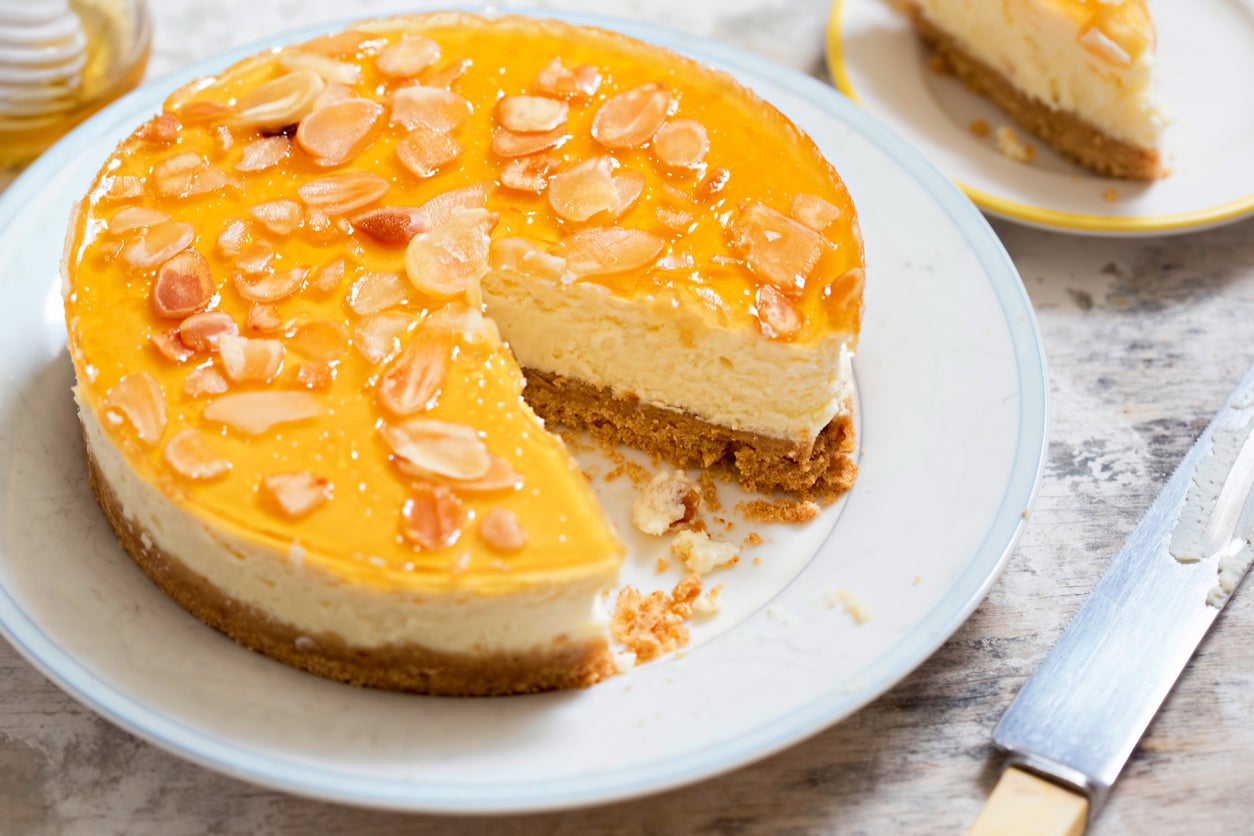
“People nowadays seek flavours that bring comfort and pleasure, often turning to desserts that evoke a sense of nostalgia. Cheesecake is one such dessert, as its many variations are familiar to most of us,” says Nikos Roussos, head chef of OPSO, a modern Greek restaurant in London.
Given cheesecake’s ancient connection with Greece, Roussos has some authority – even though I baulk at the sound of his baked cheesecake “with a hint of barrel-matured feta”. The key factors fuelling its success are the same that sent it around the world centuries ago: ease and versatility. “It can be enjoyed both as a sweet treat after a meal and as an afternoon indulgence with tea or coffee,” Roussos says. “In Greece, it’s appreciated in both contexts.”
Wherever you go in the world, cheesecake consists of sweetened creamy cheese. This is what makes it feel familiar. “I see it as more of a dessert to share, but it can absolutely be on the tea table,” says Andrew Gravett, executive pastry chef at The Langham, London. It doesn’t even have to be a conventional cake, he notes. “There has been a wave of new bakeries opening in the UK making cheesecake filled croissants, brioche and doughnuts and so on.”
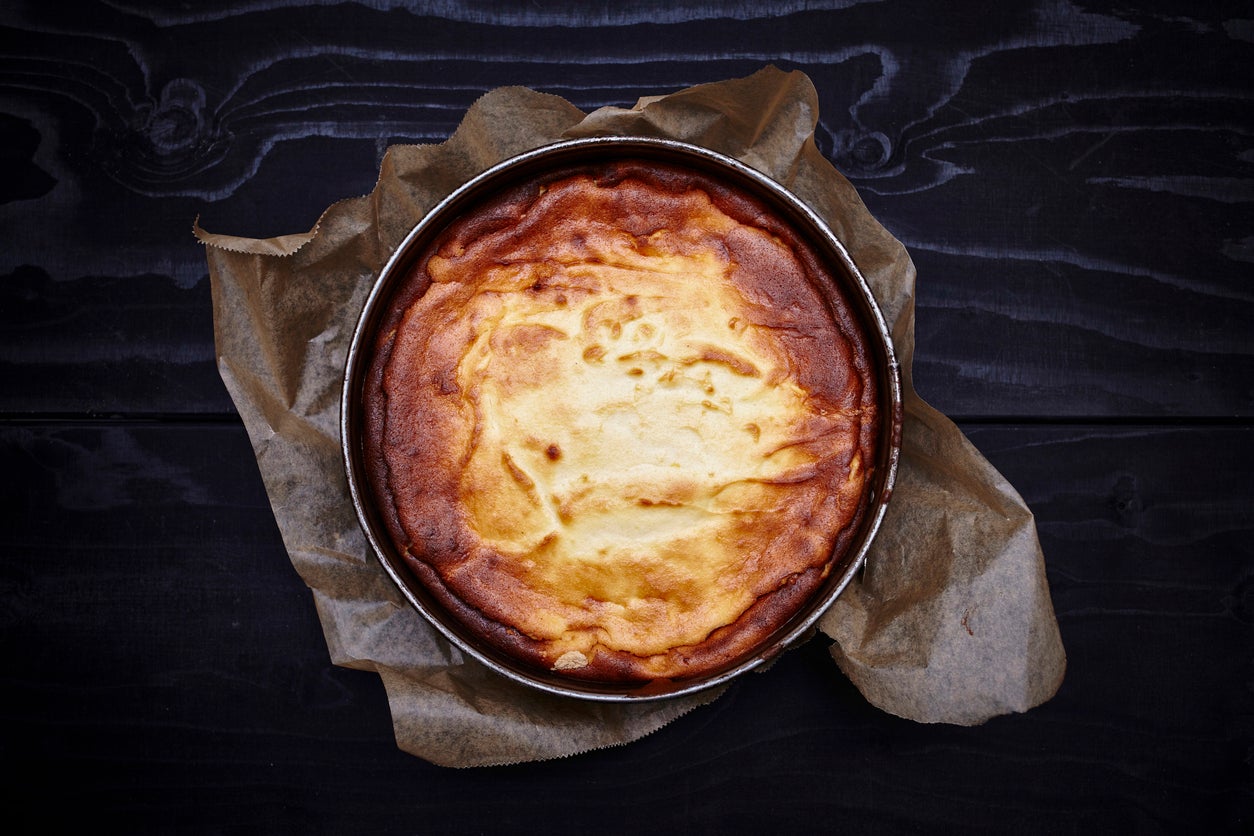
The fact that a cheesecake can be baked (or even non-baked) with little skill and relative simplicity means such experimentation is not just the preserve of professional pastry chefs. “They’re a great way to experiment with new flavour combinations,” says Waitrose’s senior brand development chef Will Torrent. “We’ve seen customers getting creative with what biscuit to use for their base, digestive, ginger nut or even biscoff. And then there’s deciding what cheese to use, from cream cheese to ricotta and mascarpone.” You just need a good recipe, Roussos adds.
All this has made cheesecake the nation’s most-loved dessert – but I sense there must be something more; something a little less tangible. I turn to food writer Heidi Lauth Beasley, who is never far from the national zeitgeist.
“In a world of low-calorie ice creams and yoghurts cosplaying as trifle, cheesecake is a no-holds-barred, full-throttle escapist,” she muses. Even if it’s just “a Gu Zillionaire pot in bed soundtracked by the medicinal hum of reality TV, it’s the sweet treat equivalent of putting your middle finger up to a bad day and opting to descend into decadence.”
How to make the perfect cheesecake
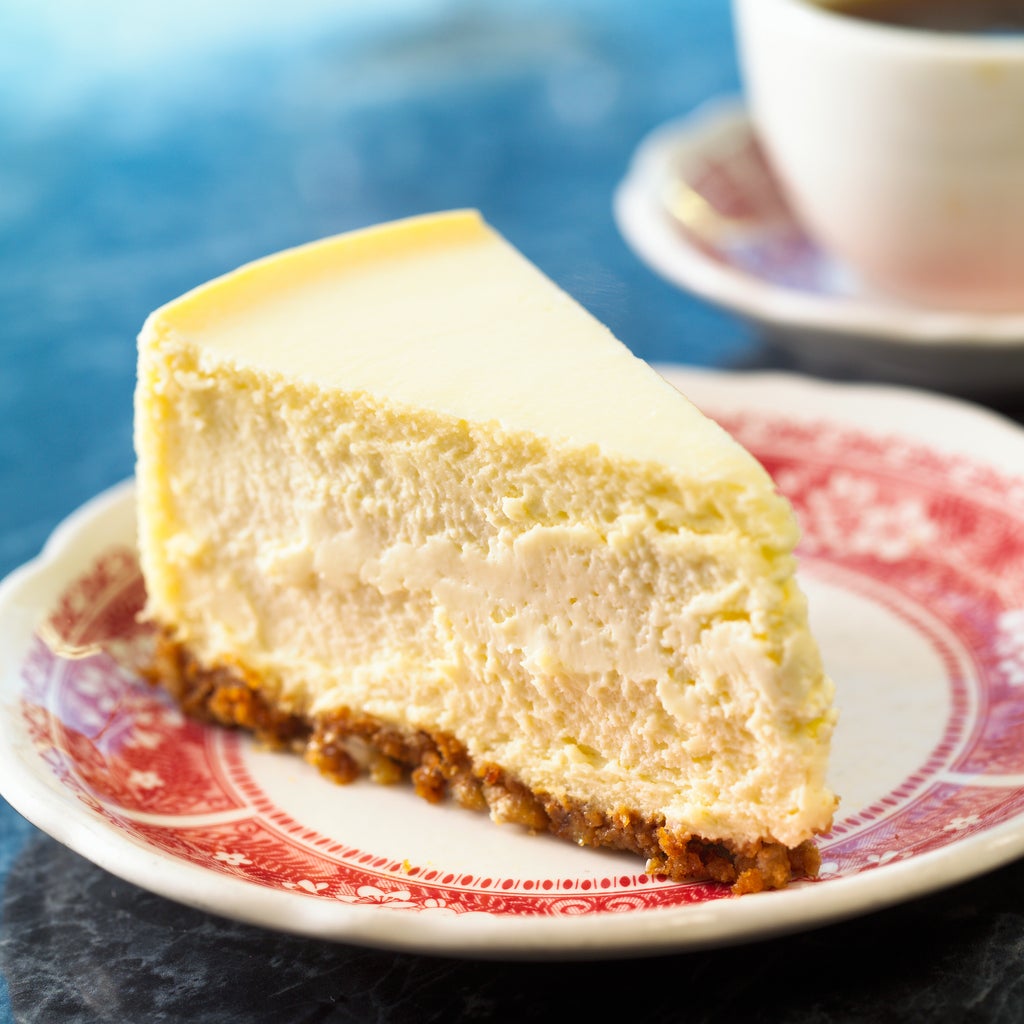
Serves: 12-14 people
Prep time: 30 minutes | Baking time: 1 hour (plus cooling time) | Chilling: 4 hours (or overnight)
Ingredients:
For the base:
200g digestive biscuits
100g unsalted butter, melted
For the filling:
900g full-fat cream cheese, room temperature
250g caster sugar
3 tbsp plain flour
1½ tsp vanilla extract
Finely grated zest of 1 lemon
1½ tbsp lemon juice
3 large eggs, plus 1 yolk
200ml sour cream
For the topping:
200ml sour cream
2 tbsp icing sugar, sifted
1 tsp vanilla extract
Method:
1. Prepare the base: preheat your oven to 180C (160C fan)/350F/gas mark 4.
2. Crush the digestive biscuits into fine crumbs (you can use a food processor or put them in a sealed bag and crush them with a rolling pin).
3. Mix the crumbs with the melted butter until well combined.
4. Press the mixture into the base of a 23cm (9-inch) springform cake tin, ensuring it’s evenly spread and compacted.
5. Bake in the preheated oven for 10 minutes, then set aside to cool while you prepare the filling.
6. Prepare the filling: increase the oven temperature to 200C (180C fan)/390F/gas mark 6.
7. In a large bowl, beat the cream cheese until smooth.
8. Add the sugar, flour, vanilla extract, lemon zest, and lemon juice, and continue beating until well combined.
9. Gradually add the eggs and yolk, one at a time, beating on low speed after each addition until just combined.
10. Fold in the sour cream until the mixture is smooth and creamy.
11. Pour the filling over the cooled biscuit base and smooth the top with a spatula.
12. Bake the cheesecake: place the cheesecake on the middle shelf of the oven and bake for 10 minutes at 200C (180C fan)/390F/gas mark 6.
13. After 10 minutes, reduce the oven temperature to 110C (90C fan)/230F/gas mark ¼, and bake for 45 minutes to 1 hour. The cheesecake should be set but still have a slight wobble in the centre.
14. Turn off the oven and leave the cheesecake inside with the door slightly ajar to cool slowly for 1 hour. This helps prevent cracking.
15. Prepare the topping: once the cheesecake has cooled, mix together the sour cream, icing sugar, and vanilla extract until smooth.
16. Spread this topping over the cooled cheesecake.
17. Refrigerate the cheesecake for at least 4 hours, preferably overnight, before serving.


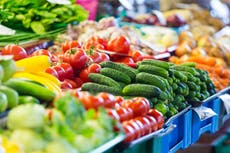

Join our commenting forum
Join thought-provoking conversations, follow other Independent readers and see their replies
Comments